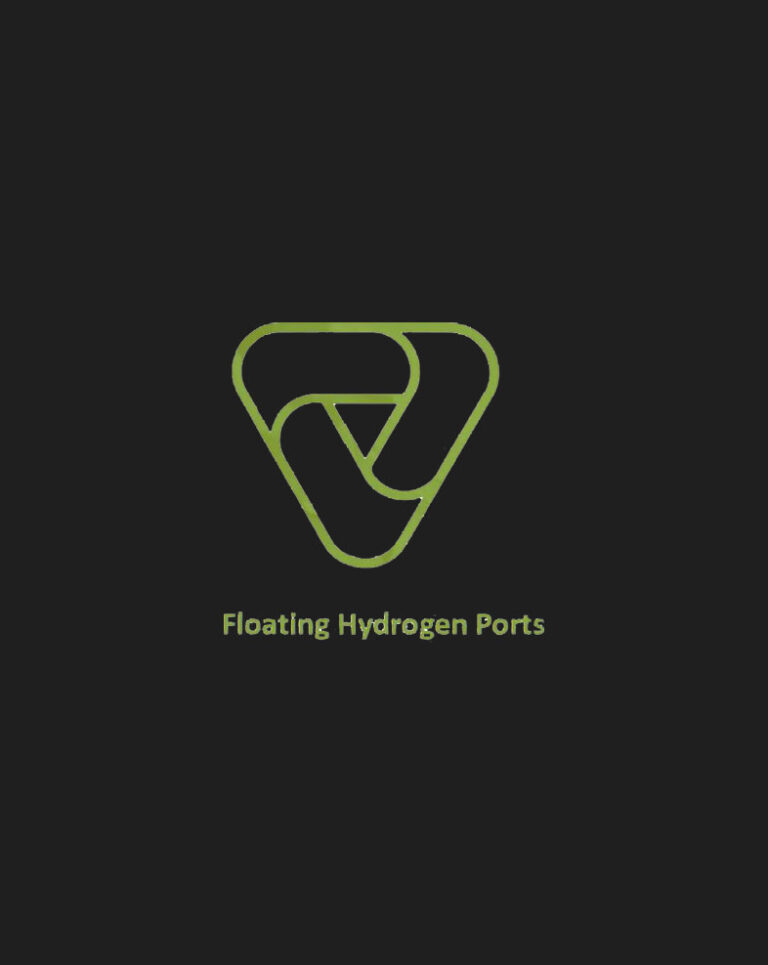Green hydrogen is a clean and renewable energy source that can be used in a variety of applications, including transportation, industry and power generation. However, producing green hydrogen from renewable sources such as wind, solar and water requires large amounts of land, infrastructure and investment. In addition, transporting green hydrogen from production sites to consumption points can be challenging and costly.
What if there was a way to:
• Produce green hydrogen on open deep seas, where the renewable energy potential is abundant and untapped?
• Power sustainable floating cities at sea, where people can live, work, and enjoy nature and green energy?
• Refuel ships with green hydrogen and derivatives, reducing their emissions and dependence on fossil fuels?
These are the questions that inspired Eng. Sumer Daou, the founder of Floating Hydrogen Ports (FHP), to start a service provider that aims to enable green hydrogen production on open deep seas, to power sustainable floating cities, and refuel ships with green hydrogen and derivatives.
Dr. Abdullah Daou, Sumer’s father, had the vision of creating floating islands since 1982. After 17 years of personal research, he self-financed and fabricated a scaled prototype in 1997 and tested it in a water basin. The result was that the prototype wave handling proved to function better than the designed theory. Accordingly, he established Beirut International Marine Industry in 2003, a heavy steel and fiberglass manufacturing company dedicated to the design and fabrication of floating islands.
“The Floating Hydrogen Ports is an opportunity for economic development and social impact. It can create jobs, generate income, and boost the Lebanese economy,” says Sumer.
The FHP rests on the unique floating islands technological solution Beirut International has developed. This structure is designed to absorb high sea waves without compromising on stability. It has been approved by the Marine Classification Society, while an Approval in Principle is being issued for the ongoing FHP.
The FHP is a novel integrated solution for sustainable marine living and green hydrogen production. It will constitute of a large stable platform on which hydrogen process equipment is installed and connected to offshore floating wind farms, wave energy generators and water current turbines. It can shorten the hydrogen production value chain and raise the efficiency of green hydrogen production, thereby reducing the levelized cost of hydrogen (LCOH). While most of the green hydrogen will be used to fuel ships, some will be used to power the FHP utilities through fuel cells as well.
The FHP has some unique features or advantages compared to its competitors or alternatives.
Systems Integration: the hydrogen process is silent, emission free and odorless. Once the FHP-2025 energy complex is installed, the surrounding spaces and roof tops can be used pleasantly, in a safe architectural design. The smart integration of heat sources, daily energy demand and supply fluctuation, combination of rainwater collection and reverse-osmosis, green vegetation and hydroponics, solid waste and wastewater treatment, telecommunication services, and yacht club plan to provide a sustainable city at sea.
Modularity, Scalability: the floating island is built in modules at a slipway shipyard, towed to place at sea, then assembled around one main anchor. This modular process speeds up production; and permits scalability within a certain range and design wave conditions.
Sustainable Industry and Materials: the main structure is made of medium size tubular steel pipes, joined in automated welding. The weight to strength ratio of this structural system is more efficient than steel plates ship-construction and heavy semi-submersible solution. The main deck and superstructure are made of polymer fiberglass materials, rust proof, thermally insulated, with a long-life expectancy.
The milestone set for August 2025 is to launch the FHP-2025 which will be making green hydrogen to supply a self-sustained resort of 110 rooms and surrounding facilities, restaurant, spa, nightclub as well as refuel ten hydrogen powered catamarans orbiting around it. The surface is around 6,600 sqm and the estimated budget is 150 million Euros. The 2025 model will function as a demonstrator project for the much more ambitious 2030 Giga Watt size FHP.
Aside from all aspirations, the project also comes with a set of challenges. On the technical side, the floating energy island hub will be located in deep seas where backfilling is not possible, needs to be able to handle waves of fifteen meters, and last a long period with minimal maintenance.
The environmental challenge is to make the FHP with minimum effect on the marine fauna and flora. Being in deep water and only anchored to the seabed, the environmental impact should be minimal compared to backfilling and cabled solutions. It also has to prevent interfering with fishing requirements.
The FHP measures the impact or success of its products, services or technological solutions by changing how the offshore green energy generation is being perceived; and paving the way to a different green maritime energy transition: more sustainable, more independent, more modular. Green hydrogen may refuel ships directly on the maritime routes and may be transported to shore by boats and pipeline.
“The FHP is a visionary project that aims to revolutionize the green hydrogen sector and the maritime industry. It is also a testament to the resilience and creativity of the Lebanese people who are facing multiple challenges in their country. It is an example of how innovation can overcome adversity and create positive change for humanity and the planet, ” says Sumer.



